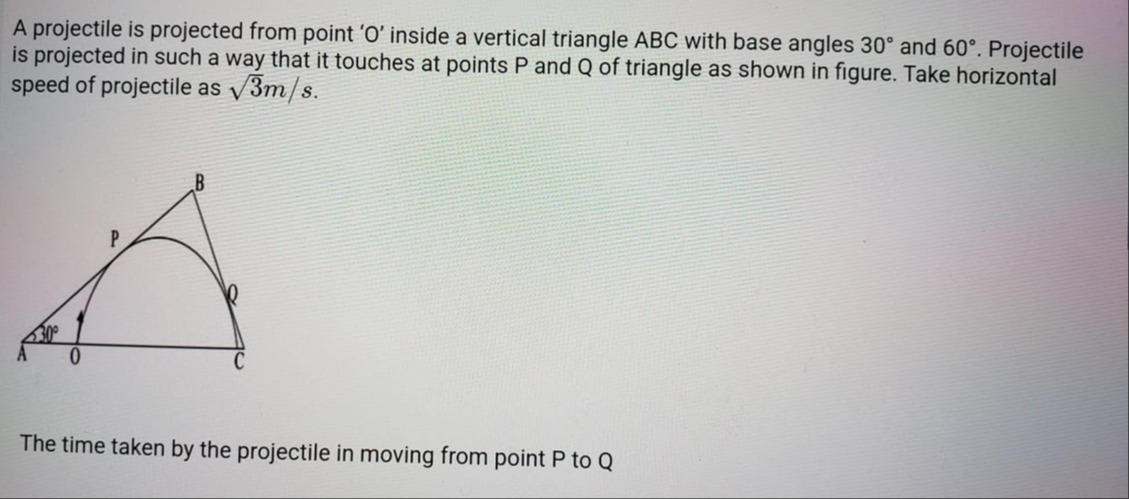Question
Question: A projectile is projected from point 'O' inside a vertical triangle ABC with base angles 30° and 60°...
A projectile is projected from point 'O' inside a vertical triangle ABC with base angles 30° and 60°. Projectile is projected in such a way that it touches at points P and Q of triangle as shown in figure. Take horizontal speed of projectile as 3m/s.

0.4 s
Solution
The problem describes a projectile motion where the trajectory touches two sides of a triangle, which act as tangents to the parabolic path. We are given the horizontal speed of the projectile and the angles of the tangents.
-
Identify the given information:
- Horizontal speed of the projectile, vx=3 m/s. The horizontal component of velocity remains constant throughout the projectile motion.
- The side AB is tangent to the trajectory at point P. The angle of AB with the horizontal base AC is 30∘.
- The side BC is tangent to the trajectory at point Q. The angle of BC with the horizontal base AC is 60∘.
-
Determine the vertical velocity at point P: At point P, the velocity vector of the projectile is along the tangent AB. The angle of the velocity vector with the horizontal is 30∘. The slope of the tangent is given by vxvy. So, tan(30∘)=vxvyP. vyP=vxtan(30∘)=3 m/s×31=1 m/s.
-
Determine the vertical velocity at point Q: At point Q, the velocity vector of the projectile is along the tangent BC. Since the projectile is moving downwards at Q (after crossing the highest point), the angle of the velocity vector with the horizontal is −60∘. So, tan(−60∘)=vxvyQ. vyQ=vxtan(−60∘)=3 m/s×(−3)=−3 m/s.
-
Calculate the time taken from P to Q: For vertical motion under gravity, the change in vertical velocity is given by Δvy=vy,final−vy,initial=−gΔt. Here, vy,final=vyQ=−3 m/s and vy,initial=vyP=1 m/s. Let TPQ be the time taken from P to Q. Δvy=vyQ−vyP=−3−1=−4 m/s. Therefore, −4=−gTPQ. TPQ=g4.
-
Substitute the value of g: Assuming the standard value of acceleration due to gravity, g=10 m/s2. TPQ=104=0.4 s.
The time taken by the projectile in moving from point P to Q is 0.4 s.
